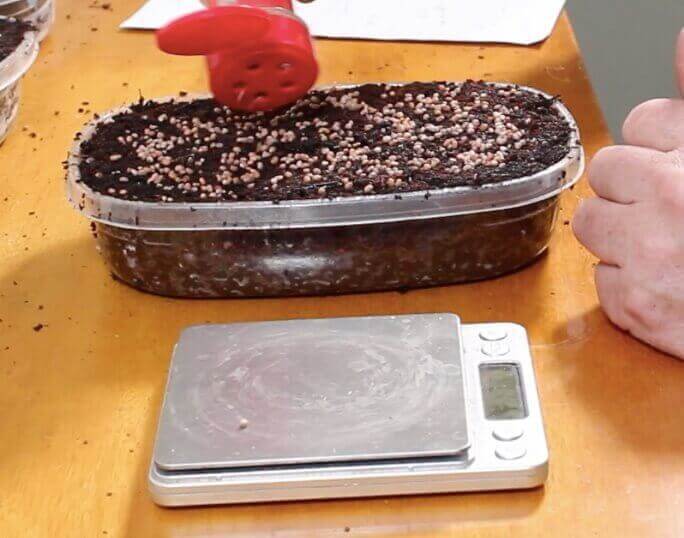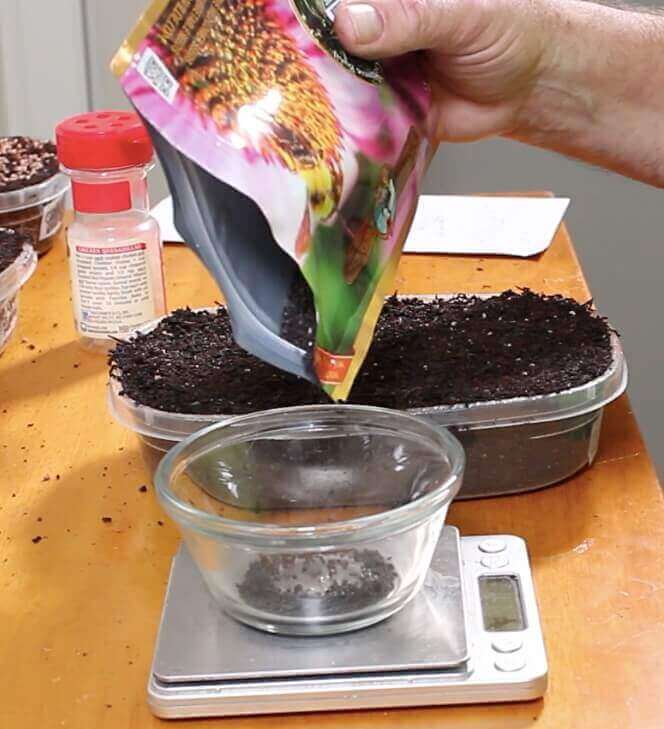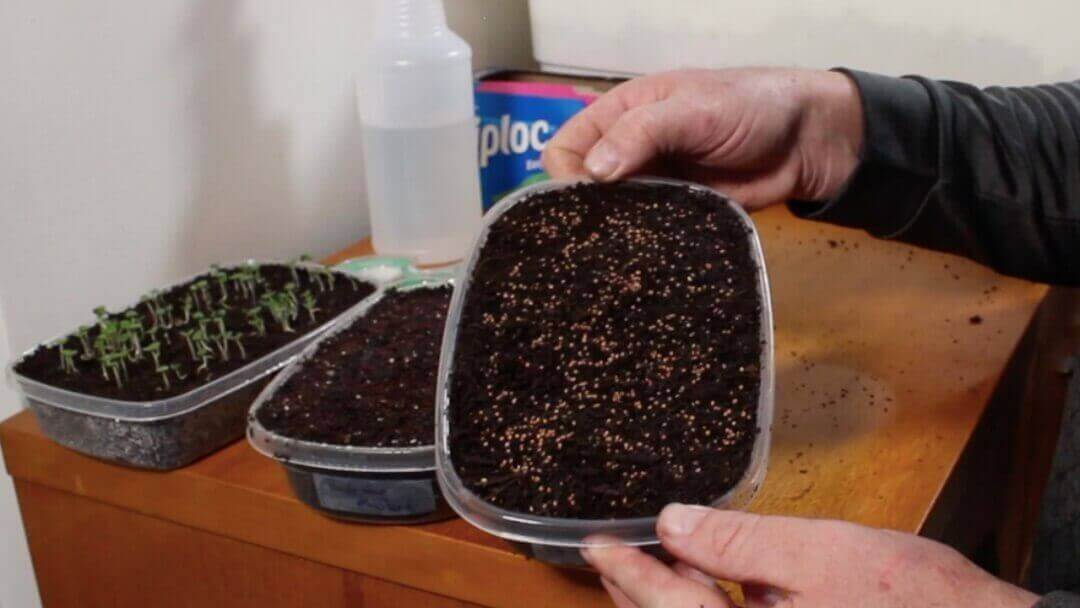Sowing microgreen seeds at a consistent density will make it easier for you to care for them as they sprout and grow.
Let’s face it; no one wants to create more work for themselves, and the easier it is to care for plants, the more likely you’ll stick with it or increase the number you grow.
To sow seeds at a consistent density, each tray has the same number of seeds, and thus plants, when they sprout is to know how many seeds are in a given mass unit of weight.
I’m not suggesting you take the time to count the seeds of every variety you grow and weigh them. Those seeds are damn small. Instead, we’ll research other people’s estimates and use their numbers.
Calculating Seeding Density the Smart Way
The internet is a fantastic thing.
So are the professional growers and commercial seed companies who have already calculated and posted how many seeds are in a unit of weight, whether it be the number of seeds in a pound, 1/4 pound, ounce, or grams.
Of course, there’s variation in those estimates because of many things like cultivars, growing conditions, and calculation methods.
However, I’ve combined data from several growers, calculated an average, and will present those averages in a handy pdf download.

Microgreen Seeds Per Gram
Click here to have the microgreen seed per gram pdf open. The chart contains the average number of seeds per gram for about 20 microgreen varieties.
You can also go to Home Microgreens and view a calculator I made to give you how many microgreen seeds you need for any tray size.
Calculating a Seeding Density
The second part of the video below shows how I determined my seeding density and delivered the right number of seeds to my planting tray.
Notes: This video was made when starting with microgreens. I will not remove this video as it still has useful information.
Instead, I’ll link to more recent videos and blog posts that should be updated.
The seeding densities have been much more defined since this post was first published. More variables were not accounted for, such as how large each variety grows before harvest.
Below is a link to an article where you can use a calculator to determine a more refined seeding density based on any size microgreen tray you use and the microgreen seeds sold in the Home Microgreen Store.
I’ve changed the trays; those shown are beta versions. The new Home Microgreen Trays have a surface area of 37.5 square inches.
Don’t use a drill; it doesn’t work very well. Instead, I use this tool to melt holes in the tray bottoms. It works great!
I still wish I was measuring gold and not radish seeds!
That scale is not as accurate as needed. Now I use this scale.
Additional Articles on Calculating Seed Density
Below are links to other articles that will help you calculate seeding density, including web-interface calculators that make it easy.
Calculating Microgreen Seed Density For Your Planting Trays
Microgreens Seed Calculator – Find the Perfect Seeding Density
What You Need to Find Your Ideal Seeding Density
To find a rough first guess on how many microgreen seeds you need per tray, measure the dimensions of your trays.
The trays used in the video are 7 3/4 by 5 inches. Or 38.75 square inches.
With most microgreens, I’ve found that, on average, 21 seeds per square inch of planting soil is a good first try.
So multiply your tray surface area (in square inches) by 21 to get an idea of how many seeds you need.
Then find the variety of microgreens you’re planting on the downloaded pdf.
Divide that value into the ideal number of seeds your tray will hold (tray sq-inches X 21).
An Example
Your tray is 40 square inches, and you want to plant collards.
Collards have around 258 seeds per gram (use the pdf).
Math
40 sq-inches X 21 (my seeding density) is 840 seeds per tray.
Eight hundred forty seeds / 258 seeds/gram = 3.3 grams.
Using 3.3 grams of collard seeds should give you a decent seeding density. And every time you plant collards, the trays will grow the same.

Seeding
Take a digital scale (follow the link to see a good inexpensive scale) and a small container. Use the tare function to zero out the container and pour 3.3 grams of collard seeds.
Once you spread those seeds on the soil in your tray, you should have a good seeding density for microgreens.
What If The Density Is Wrong?
The first time is a bit of a guessing game. But now you have some solid numbers to modify your seeding density. If the density is too light (or has a poor germination rate), you can increase your seed weight the next time.
Too many seedlings lower your weight. You’ll have your seeding numbers exactly where you want them within a seeding or two.
No more guessing.
If You Don’t Mind, Please Share
Please share this post with your friends on social media if you enjoyed it. Use the buttons below. Pin the image below to your Pinterest boards.
Don’t forget to also subscribe to my YouTube channel. Your views and subscription are much appreciated.


